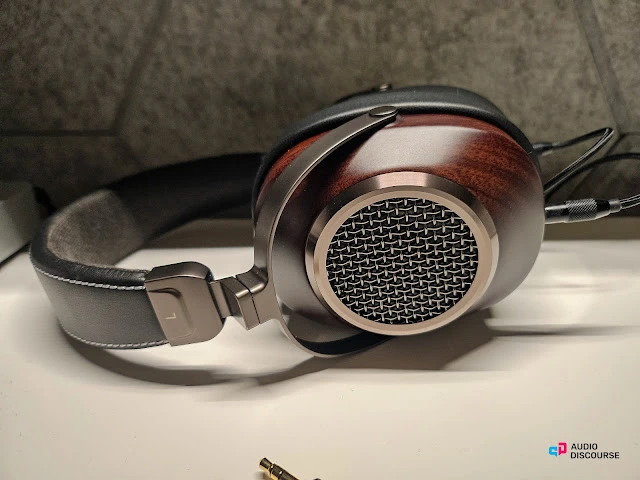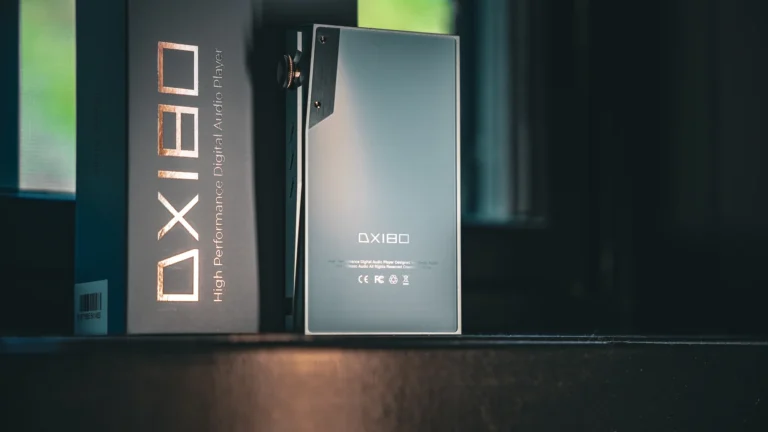Meze Elite Isodynamic Hybrid Array headphones review 2024
When it comes to the advantages of headphones over loudspeakers, it could seem like stating the obvious. First of all, unlike loudspeakers, you may listen whenever you want without bothering people around you, so houses with partners, families, and near neighbors demand less compromise on a daily basis. Second, they bring the listener closer to the music and offer a more personal listening experience.
The third advantage, however, benefits both the designer and the listener since, in contrast to traditional loudspeakers, their performance is independent of the room around them, so the sound you receive is much closer to what the designer intended.

Because of this, many people think that investing in high-end headphones is justified. Antonio Meze, the founder and lead designer of Meze Audio, a company based in Romania, is obviously aware of this. For more than ten years, his company has been pushing the boundaries of ear monitors by providing a wide range of head candy, from entry-level buds that cost less than a hundred pounds to standard-setting ear models that don’t compromise.
Perfect partners
The most advanced headphone Meze makes, the Meze Elite Isodynamic Hybrid Array, retails for £3,599 and was introduced in September of last year. It is priced higher than its similar-looking £2,599 Empyrean stablemates. The Elite package’s main selling point is its association with Rinaro Isodynamics, an acoustic research and engineering firm that specializes in planar magnetic driver technology, just like these and the £1,799 Liric model.

The Elites receive a Rinaro Parus driver diaphragm, which has an active area of 4650mm2 and weighs 0.05g less than the Isoplanar variation in the Empyrean model. This is subsequently encased in a reinforced polymer shell that is intended to sustain the 12.7N load produced by the hybrid magnet array, which creates a steady magnetic field across the diaphragm’s surface using neodymium magnets.
There are two coils in this low-mass diaphragm layer: a spiral coil over the ear canal handles mid- and higher frequencies, and a “switchback”-shaped coil on the upper portion of its surface handles lower frequencies.
Design for life
The ovoid-shaped interchangeable earcups are also secured in place by magnets. Why ovoid? because, in comparison to the oval, square, or circular varieties that most brands use, they guarantee a better contoured fit around the human ear.
Two sets of earcups are included with the Elite cans: one is covered in soft real leather, and the other is Alacantara, which has a texture that is somewhere between suede and brushed cotton. Although I don’t see that offer being used frequently considering their exceptional build quality, being replaceable upholds the Meze idea that every set is hand made and completely serviceable for a lifetime of usage, should you need to replace any parts.

Each pair of Elite headphones comes with a unique, robust alloy carry case that is superior to those made by most luggage manufacturers. It has rubber feet and locks.
The high-end items are safely stowed within and prepared for use. Three cable options for 3.5mm, 6.35mm, and balanced XLR connections were included with our test units. At the point of sale, owners are able to specify one set.
From their dual leather and carbon fiber headband to the way each earcup rotates and expands on sliding shafts without undue friction or play, the Elites’ CNC alloy flesh offers a pleasing blend of deceptively straightforward design that is expertly accomplished. Additionally, each cup tilts by a good few degrees, making it possible to get a snug, comfortable, and secure fit in a matter of seconds. They are among the most comfortable earphones I’ve ever used, which means I can listen for longer uninterrupted. My ears feel completely encased without the pads putting undue pressure on them.

Performance
Connecting the Elites to my preferred Musical Fidelity M1HPA headphone amplifier through its 6.35mm output demonstrates how simple they are to operate. Despite their stated sensitivity of 32 ohms and range of 3Hz to 112 kHz, they actually require minimal power to energize their hybrid planar drivers.
On our recently reviewed VPI Scout 21 turntable, Fleetwood Mac’s Gypsy from their 1982 Mirage album is playing. The music sounds vibrant and exquisitely timed, with surprisingly low levels of overhang that evoke the sound of well-driven electrostatic loudspeakers.
I can feel Mick Fleetwood gurning away, wild-eyed, and completely focused to make sure his timing supports the rhythm in the manner that only he can. His percussion is so well-gripped. Not because the Elites are too fast, but rather because they capture the dynamics and intensity of the music with a level of precision that surpasses that of the majority of headphones available.
As the tempo slows down with the next Only Over You song, the Elites effortlessly regulate John McVie’s low-slung bass line, letting its lovely melody create the tone of the song without adding the subtle harshness or bloating that many headphones may.
Musical reunion
I would be remiss if I did not return the favor and restore the Elites’ use of McIntosh’s MHA200 tube-based headphone amplifier, which we just reviewed. The M1HPA is undoubtedly a powerful and neutral performer, but it can also be a bit of a bruiser. Its abilities are better suited to smoothing out the flaws of less skilled headphones than to genuinely displaying the subtleties of those in the forefront.
However, the Elites are able to incorporate a far more expansive, natural, and open window into the music thanks to the McIntosh. Tears For Fears’ “I Believe” from their Songs From The Big Chair album is available as a 24-bit/96kHz file on Qobuz, featuring the Elites opening up lead singer Roland Orzabal’s vocals with striking realism. He purposefully holds back his voice early in the mix for more impact when he finally pushes the notes, and he can move fluidly from high to low inside the same extended vowel.
The total absence of any sibilance or “hotspots” in his closely mic’d vocal mix is both noticeable and uncommon for headphones that can produce detail to this degree. Instead, the detail is given with such melody that it revitalizes the song without resorting to harshness or overemphasis.

Another essential component of the Elite’s personality is its very vast soundstage, which has no discernible limits. Roland’s voice can be described solely by its tone on a mediocre system, but the Elites go one step further by showcasing the rich breadth of his voice, which fills the midrange and pushes well beyond the physical limitations of the headphones.
Imaging is also outstanding via the Elites. Nick Drake’s “Three Hours” is available for streaming on Qobuz at 24/96, with ample room for each instrument to sound completely developed and positioned. As their echoes deteriorate far into the enormous expanse of the musical landscape that the Elites lay out, the bongos in the right channel are forced toward the edge of the soundstage.
In Summary
The Meze Elites headphones are outstanding. They provide hours upon hours of musical pleasure with their spacious, open sound that is articulate, rich in detail, and mellow in delivery. They also have a smooth frequency range.
For those who can afford them, they might be the last headphones they ever purchase because they are totally serviceable and built to the highest standards.
Ideal for…
Fans of headphones who are unyielding and who value music over sound effects
Consider…
Test before you buy because there is some sound leaking due to the open-backed design.
Specifications
- Driver: 102 x 73 mm Rinaro Hybrid Isodynamic Array
- Open-backed circumaural headphones
- Response to frequency: 3 Hz–112 kHz
- 32Ω is the impedance.
- 101 dB is the nominal SPL (1 mW / 1 kHz).
- 430g in weight
- Included are an aluminum carry case and two sets of earcups (one made of leather and the other of Alcantara). One pair of connecting cables including an XLR, 3.5mm, or 6.35mm connector






